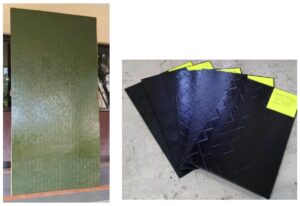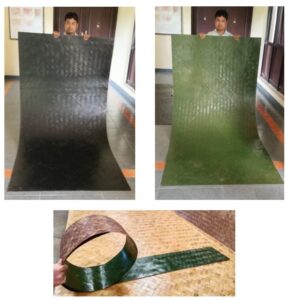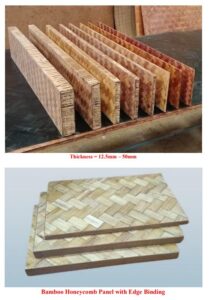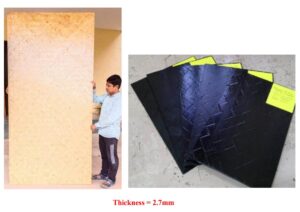1. Executive Summary
This project report outlines the establishment of a Bamboo-Based Packaged Drinking Straw Production Unit. With the growing demand for eco-friendly alternatives to plastic straws, this venture aims to produce high-quality, biodegradable drinking straws made from bamboo. The report highlights the production process, market potential, and financial feasibility of the project.
2. Project Overview
2.1 Objectives
To produce eco-friendly and biodegradable bamboo drinking straws.
To promote sustainable practices and reduce plastic waste.
To create employment opportunities and support local bamboo farmers.
2.2 Scope
The project involves the production of:
Single-use packaged bamboo drinking straws.
Customizable straws for restaurants, cafes, and eco-conscious consumers.
3. Market Analysis
3.1 Industry Overview
The global push to ban single-use plastics has increased the demand for sustainable alternatives like bamboo straws.
Bamboo straws are preferred for their durability, biodegradability, and aesthetic appeal.
3.2 Target Market
Restaurants, cafes, and hotels.
Event organizers promoting zero-waste practices.
Retailers and e-commerce platforms selling eco-friendly products.
3.3 Competitive Analysis
Competitors include manufacturers of paper, metal, and silicone straws.
Bamboo straws have a unique advantage due to their natural appeal and biodegradability.
4. Technical Feasibility
4.1 Location and Infrastructure
Proposed location: Close to bamboo-growing regions to reduce transportation costs.
Facility requirements: 3,000 sq. ft. for production, storage, and administrative areas.
4.2 Production Process
Raw Material Procurement: Sourcing high-quality bamboo from local farmers.
Cutting and Shaping: Cutting bamboo into straw-sized lengths and shaping them.
Cleaning and Treatment: Washing and treating straws to ensure hygiene and durability.
Drying: Using drying ovens to remove moisture.
Polishing and Finishing: Smoothing edges and polishing the surface.
Packaging: Eco-friendly packaging of straws for retail or bulk sale.
4.3 Machinery and Equipment
Bamboo cutting machines
Polishing machines
Drying ovens
Cleaning and treatment tanks
Packaging equipment
5. Organizational Structure
5.1 Management Team
Project Manager: Overseeing operations and strategy.
Production Supervisor: Managing the manufacturing process.
Quality Controller: Ensuring hygiene and product standards.
Marketing Executive: Driving sales and partnerships.
5.2 Workforce Requirements
Skilled labor for machinery operation: 8 workers
Unskilled labor for cleaning and packaging: 5 workers
6. Financial Analysis (INR)
6.1 Capital Requirements
| Item | Cost (INR) |
|---|---|
| Land and Building (Rental) | |
| Machinery and Equipment | |
| Raw Material (Initial Stock) | |
| Working Capital | |
| Miscellaneous Expenses | |
| Total Initial Investment |
6.2 Revenue Projections
| Sales (Units) | Selling Price per Straw (INR) | Revenue (INR) |
|---|---|---|
| Annual Revenue |
6.3 Cost Structure
| Cost Component | Percentage |
|---|---|
| Raw Materials | |
| Labor | |
| Overheads (Utilities, Maintenance, etc.) | |
| Marketing and Distribution | |
| Profit Margin |
6.4 Break-Even Analysis
Break-even point: Achieved within 14-16 months of operation.
7. Risk Assessment and Mitigation
7.1 Risks
Fluctuation in bamboo supply or prices.
Competition from other eco-friendly straw alternatives.
Regulatory challenges in different regions.
7.2 Mitigation Strategies
Develop long-term contracts with bamboo suppliers.
Differentiate through branding and quality.
Stay updated on local and international regulations.
8. Marketing and Sales Strategy
8.1 Branding and Positioning
Highlight the environmental benefits and natural aesthetics of bamboo straws.
8.2 Distribution Channels
Direct sales to restaurants, cafes, and hotels.
Partnerships with eco-friendly product retailers.
E-commerce platforms and wholesale distributors.
8.3 Promotion Strategies
Social media campaigns promoting sustainable living.
Participation in trade fairs and eco-exhibitions.
Collaborations with influencers and green organizations.
9. Sustainability and Environmental Impact
Bamboo cultivation reduces deforestation and supports carbon sequestration.
Bamboo straws decompose naturally, reducing landfill waste.
Eco-friendly packaging further enhances the sustainability of the product.





